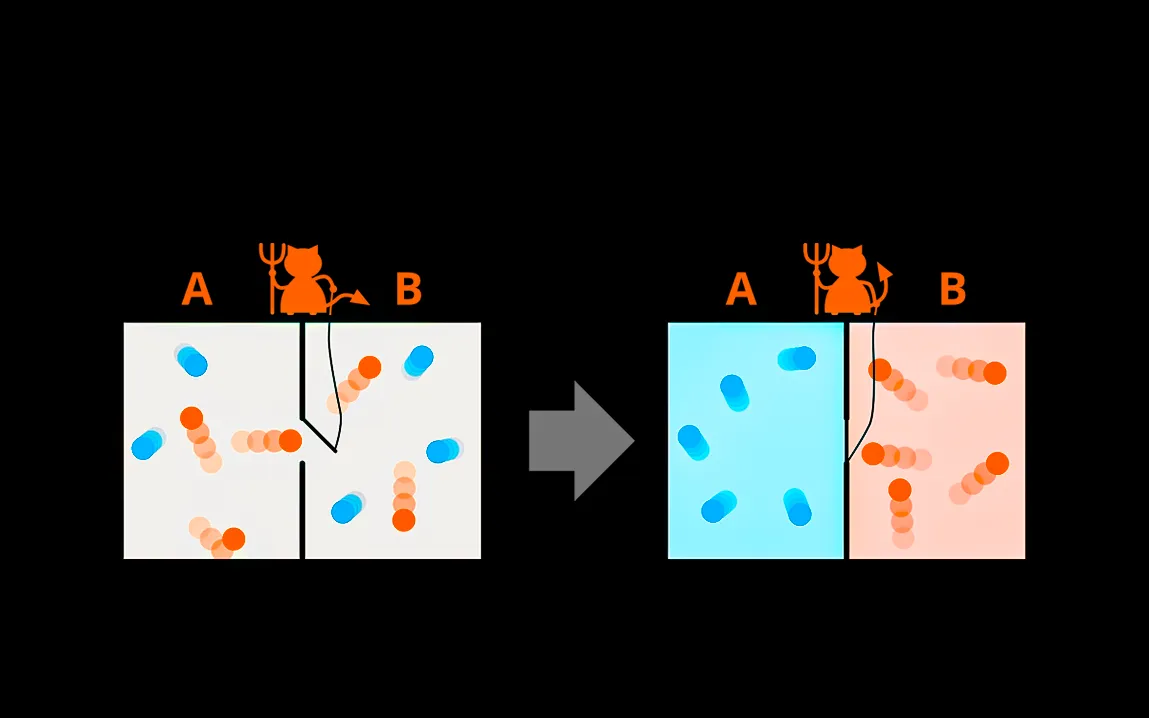In the late 19th century, physicist James Clerk Maxwell introduced a thought experiment that has intrigued and challenged scientists ever since: Maxwell’s demon. A hypothetical entity could seemingly stop the second law of thermodynamics in its tracks by creating a temperature difference without expending energy, leading to the questioning of foundational principles of physics. Recent studies have forged deeper into this paradox, taking critical evaluations within the realm of quantum theory and thermodynamics.
Maxwell’s Demon Paradox
Maxwell imagined a small creature capable of separating fast-moving from slow-moving gas molecules without doing work. By doing so, such a creature could build up a temperature difference. Once the system equilibrated, mechanical work could be obtained; this was an apparent contradiction of the second law of thermodynamics, which states that entropy-also known as randomness-in an isolated system tends to increase over time.
Insight of the Demon, Quantum View
This paradox is still giving new insight through research studies. npj Quantum Information has published a study by a research team from Nagoya University in Japan and the Slovak Academy of Sciences on the relationship between quantum theory and thermodynamics. They have shown how quantum theory does not forbid, in principle, violations of the second law, but quantum processes can be carried out without actually violating it. This would imply that the demon’s operations, if analyzed in the quantum world, are not in direct conflict with thermodynamics.
Experimental Implementations
Technological developments have enabled scientists to experimentally study ideas connected with Maxwell’s demon. For example, a paper published in Physical Review Research discussed an experiment in which a “demon” was designed to continuously measure the charge state of a double quantum dot. By using this information, the demon guides electrons against a voltage bias, effectively converting information into work. This experiment bridges the gap between theoretical constructs and practical applications, demonstrating the feasibility of Maxwell’s demon in a controlled setting.
Thermodynamic Loopholes and Information Theory
Another intriguing development is the exploration of thermodynamic loopholes. A publication in Nature discussed how certain quantum systems could exploit these loopholes, allowing for the extraction of work without violating the second law. This is achieved by utilizing information about the system’s state, highlighting the deep connection between information theory and thermodynamics. The demon’s ability to gather and utilize information becomes a crucial factor in understanding its potential to influence thermodynamic processes.
Implications and Future Directions
The study of Maxwell’s demon has profound implications for our understanding of the interplay between information and energy. It challenges traditional notions of entropy and the second law of thermodynamics, especially in quantum systems. As research progresses, it may lead to the development of new technologies that harness information to perform work, potentially revolutionizing fields like quantum computing and nanotechnology.
In conclusion, Maxwell’s demon stands as a critical discussion point of the foundations of physics. Modern scientific lenses enable researchers to use this thought experiment in a fresh manner, creating new insights related to the link between quantum theory and thermodynamics that may spur further discoveries in the future.



